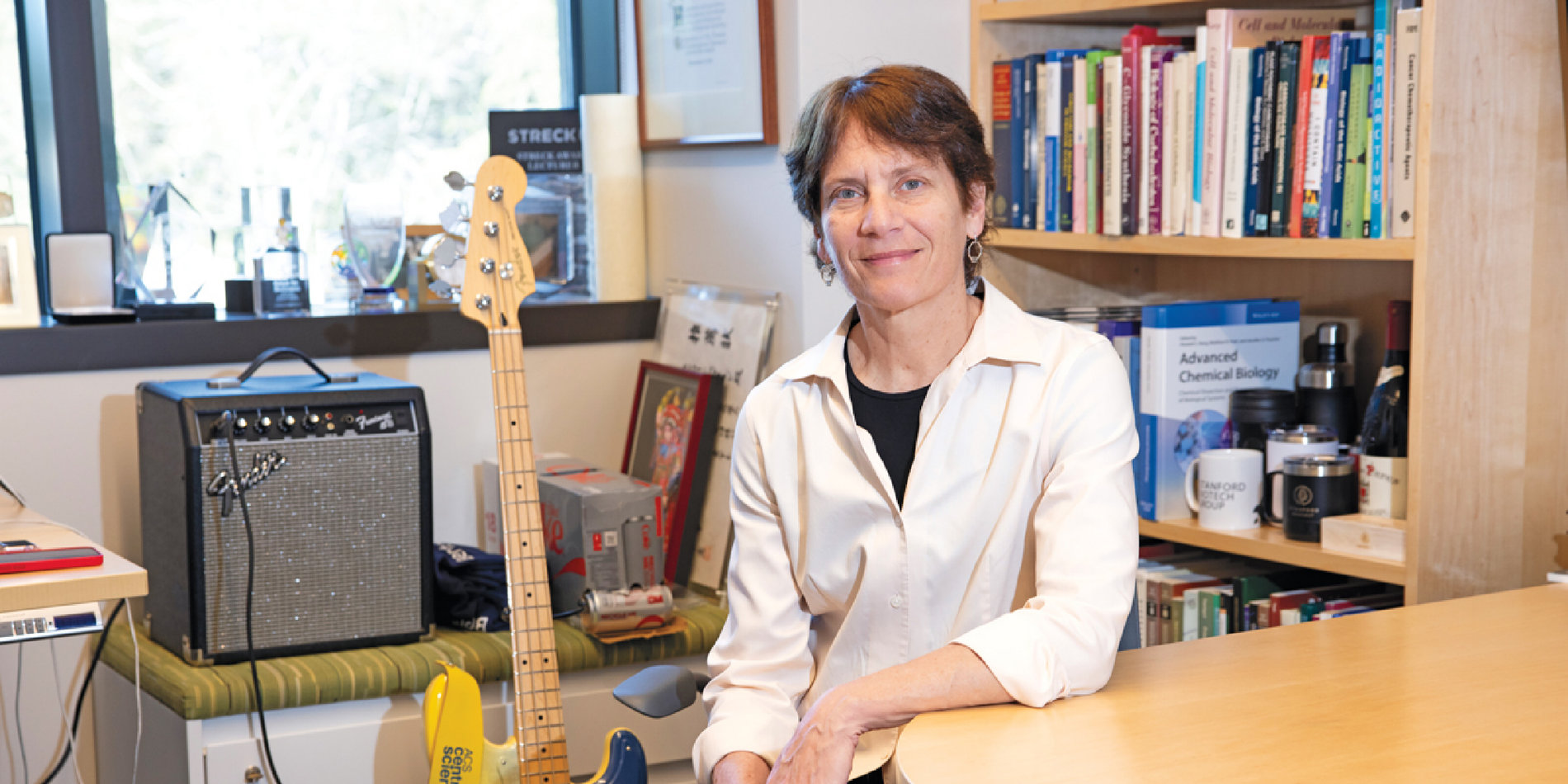Carolyn Bertozzi awarded Chemistry for the Future Solvay Prize
Stanford chemistry professor Carolyn Bertozzi has been awarded the 2020 Chemistry for the Future Solvay Prize.

Awarded every two years, the €300,000 prize recognizes a scientist for “major discoveries that lay the foundation for the chemistry of the future while serving human progress.” This year’s winner was selected by an independent jury of six renowned scientists, including a Nobel laureate. The prize was created in 2013 to celebrate the 150th anniversary of Ernest Solvay’s founding of the chemical company that bears his name.
The Chemistry for the Future Solvay Prize is being presented to Bertozzi for her invention of “bioorthogonal chemistry,” the name she coined for chemical reactions that can take place within living cells and organisms. These reactions can be used to label specific molecules in cells for imaging, drug target identification and the creation of next-generation biotherapeutics.
“I am deeply honored to join the distinguished list of Solvay prize winners. This recognition reflects decades of work by more than 100 talented coworkers, with whom it has been a privilege to share in scientific discovery,” said Bertozzi, who is the Anne T. and Robert M. Bass Professor in the School of Humanities and Sciences and the Baker Family Co-Director of Stanford ChEM-H.
Bertozzi’s research has focused on applying bioorthogonal chemistry to study the glycocalyx, the forest of sugar molecules that decorate cell surfaces. These sugars can function as molecular social cues to help cells recognize and communicate with one another, and they are implicated in cancer, infectious diseases, and immune responses, among other health applications.
In recent years, Bertozzi’s lab has created new tools and made important discoveries related to this sugar coating, including the development of a fast point-of-care test for tuberculosis, finding answers—and a connection to cancer—for a mysterious rare disease, and developing a new kind of cancer immunotherapy.
Bertozzi credits much of her success to the academic ecosystem and trainees at Stanford, as well as her many former trainees from the University of California, Berkeley, where she started her academic career. She is hopeful that ChEM-H, an institute which seeks to bridge chemistry, engineering and medicine to improve human health, will further enhance Stanford’s collaborative environment.
“Stanford is a place where translation is baked into the culture,” Bertozzi said. “I would love to see ChEM-H serve as a catalyst and support structure to help more people transition their work in fundamental scientific discovery to clinical impact.”
Bertozzi will receive her award on March 10 in a ceremony held at the Palais des Académies in Brussels in the presence of His Majesty King Philippe of Belgium.
Bertozzi is also a member of Stanford Bio-X, the Wu Tsai Neuroscience Institute, the Stanford Cancer Institute, and the Maternal & Child Health Research Institute (MCHRI), as well as an investigator at the Howard Hughes Medical Institute.



